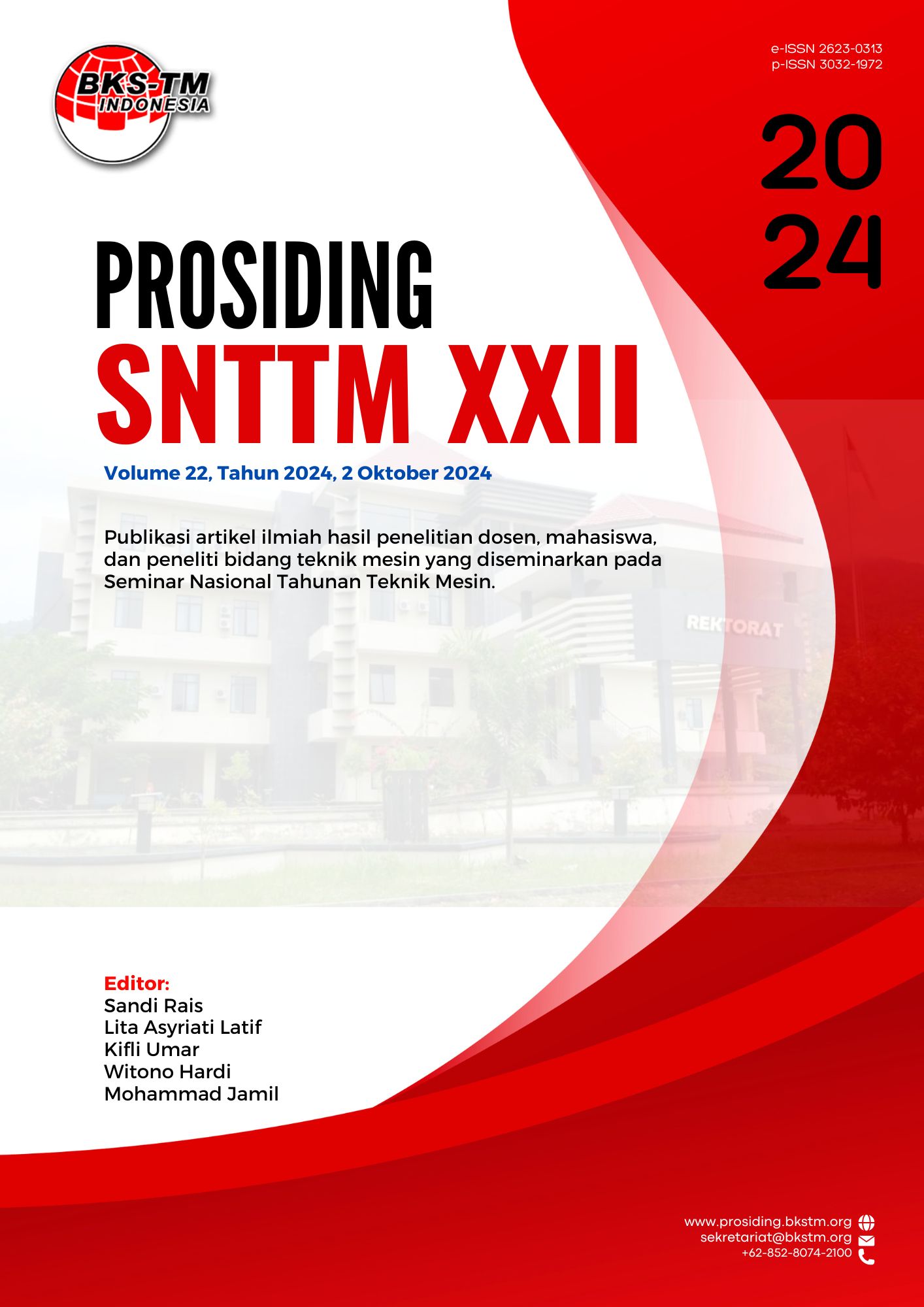Efek tegangan dan konsentrasi larutan asam sulfat pada Pembentukan burned anodizing pada proses anodisasi aluminum Foil
DOI:
https://doi.org/10.71452/590785Keywords:
Aluminum Foil, Anodization, Voltage, Solution Concentration, Burned AnodizingAbstract
The surface engineering process involving electrochemical methods is the anodization process. Anodization is an electrochemical process that produces anodic oxide on the surface that can change the surface proper-ties. In the anodization process, burned anodizing and surface cracking during the anodizing process hurt the surface quality. This study tries to see the formation of an aluminum oxide layer that causes burned an-odizing and surface cracking by adjusting the voltage and concentration of the solution. This study uses aluminum foil as a sample and graphite as an electrode. Anodization is carried out by providing a voltage range of 8 to 16 volts at two H2SO4 solution 2M and 3M concentrations. Observations of surface character-istics include micro and macro surface structures, surface roughness, and surface morphology. Calculations of the burned area are also carried out for each treatment. The test results show that the percentage of burned area increases with increasing voltage and concentration. The smallest burned area percentage was obtained with a value of 4% for samples at a voltage of 8 Volts and a solution concentration of 2M. In con-trast, the maximum value was obtained, reaching 95% of the area burned on the surface for samples of 16 Volts at a concentration of 3 M. However, a tendency was obtained to decrease surface roughness with in-creasing anodization voltage in both the non-burned and burned areas. From the test results using SEM, it was also found that surface cracks occurred in addition to being burned on the surface
References
Ozgul Keles, Murat Dundar, Aluminum foil: Its typical quality problems and their causes, Journal of Materials Processing Technology, Volume 186, Issues 1–3, 2007, Pages 125-137.
Herath, I., Davies, J., Will, G., Tran, P. A., Velic, A., Sarvghad, M., Yarlagadda, P. K. (2022). Anodization of medical-grade stainless steel for improved corrosion resistance and nanostructure formation targeting biomedical applications. Electrochimica Acta, 416, 140274.
Ofoegbu, S. U., Fernandes, F. A., & Pereira, A. B. (2020). The sealing step in aluminum anodizing: A focus on sustainable strategies for enhancing both energy efficiency and corrosion resistance. Coatings, 10(3), 226.
Li, X., Lin, B., Xiong, L., & Du, X. (2020). Symmetric pulsed anodizing of aluminum foil for aluminum electrolytic capacitors. ACS Applied Energy Materials, 3(2), 1804-1810.
Song, M., Liu, Y., Cui, S., Liu, L., & Yang, M. (2013). Fabrication and icing properties of super-hydrophilic and superhydrophobic aluminum surfaces derived from anodizing aluminum foil in a sodium chloride aqueous solution. Applied surface science, 283, 19-24.
Nualsing, D., Pannucharoenwong, N., Rattanadecho, P., Echaroj, S., Benjapiyaporn, C., & Benjapiyaporn, J. (2021). Textural characteristic of anodized aluminum foil for thermal energy storage application. Energy Reports, 7, 720-729.
P. Sheasby, R. Pinner (Eds.), The Surface Treatment and Finishing of Aluminium and Its Alloys, 6th ed., vol. 1, Finishing Publications Ltd., Stevenage, 2001.
Jagminas, A., & Vrublevsky, I. (2020). Anodizing of aluminum under burning conditions. Nanostructured Anodic Metal Oxides, 89-122.
Yao, C., Lu, J., & Webster, T. J. (2011). Titamedium and cobalt-chromium alloys for hips and knees. In Biomaterials for artificial organs (pp. 34-55). Woodhead Publishing.
Downloads
Published
Conference Proceedings Volume
Section
License
Copyright (c) 2025 Hairul Arsyad, Nurkhofifah Marsing (Author)

This work is licensed under a Creative Commons Attribution-NonCommercial 4.0 International License.
Proceeding SNTTM by BKS-TM Indonesia is licensed under Creative Commons Attribution 4.0 International





